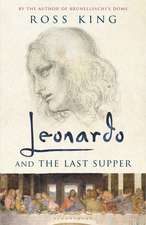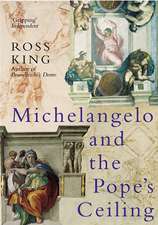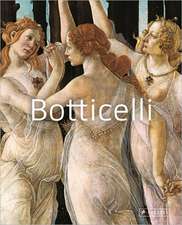Shakespeare and Visual Culture: Arden Shakespeare Dictionaries
Autor Dr Armelle Sabatieren Limba Engleză Hardback – 16 noi 2016
Din seria Arden Shakespeare Dictionaries
- 44%
 Preț: 577.49 lei
Preț: 577.49 lei - 44%
 Preț: 677.30 lei
Preț: 677.30 lei - 43%
 Preț: 681.09 lei
Preț: 681.09 lei - 43%
 Preț: 683.49 lei
Preț: 683.49 lei -
 Preț: 635.27 lei
Preț: 635.27 lei - 22%
 Preț: 1014.54 lei
Preț: 1014.54 lei -
 Preț: 270.06 lei
Preț: 270.06 lei - 25%
 Preț: 273.27 lei
Preț: 273.27 lei - 12%
 Preț: 270.06 lei
Preț: 270.06 lei - 11%
 Preț: 274.20 lei
Preț: 274.20 lei - 44%
 Preț: 817.06 lei
Preț: 817.06 lei - 43%
 Preț: 822.18 lei
Preț: 822.18 lei - 37%
 Preț: 815.63 lei
Preț: 815.63 lei -
 Preț: 269.70 lei
Preț: 269.70 lei - 12%
 Preț: 269.60 lei
Preț: 269.60 lei -
 Preț: 245.11 lei
Preț: 245.11 lei
Preț: 816.57 lei
Preț vechi: 1452.28 lei
-44% Nou
Puncte Express: 1225
Preț estimativ în valută:
156.27€ • 161.22$ • 132.26£
156.27€ • 161.22$ • 132.26£
Carte tipărită la comandă
Livrare economică 05-19 martie
Preluare comenzi: 021 569.72.76
Specificații
ISBN-13: 9781472568052
ISBN-10: 1472568052
Pagini: 312
Ilustrații: 10 bw illus
Dimensiuni: 156 x 234 x 20 mm
Greutate: 0.54 kg
Editura: Bloomsbury Publishing
Colecția The Arden Shakespeare
Seria Arden Shakespeare Dictionaries
Locul publicării:London, United Kingdom
ISBN-10: 1472568052
Pagini: 312
Ilustrații: 10 bw illus
Dimensiuni: 156 x 234 x 20 mm
Greutate: 0.54 kg
Editura: Bloomsbury Publishing
Colecția The Arden Shakespeare
Seria Arden Shakespeare Dictionaries
Locul publicării:London, United Kingdom
Caracteristici
Part of an established and admired reference collection of dictionaries, formerly Continuum Shakespeare Dictionaries.
Notă biografică
Armelle Sabatier lectures at Paris II University, France.
Cuprins
IntroductionA-Z entriesBibliographyIndex
Recenzii
An essential tool . Thoroughness, conciseness, and even-handedness characterize Sabatier's introduction as well as her individual entries. The 6000-word introduction . is in my opinion the best place for anyone new to visual Shakespeare studies to get the lay of the land.
This dictionary explores the meaning and historical and social background of references found in works by Shakespeare to the visual arts and vision, termed "visual culture." Explaining that visual culture is today a diversified field of interdisciplinary study, Sabatier (Paris II Univ., France) asserts that Elizabethans' visual experience and material culture shared a much closer relationship with literature, employing as interpretive means rhetoric, prosody, illusionistic art, and connotative meaning. The author's introduction surveys the changing conception of visual culture among contemporary art historians and literature theorists, clarifying the complexities of the term . The dictionary's alphabetically organized headwords, featuring plentiful see also and cross-references, offer a lengthy, systematical, three-part discussion (labelled A, B, and C) covering the term's general definition, spelling variants, textual contexts, and etymology; its usage and evolution in the Shakespeare corpus; and later interpretations. Lists of the headwords, abbreviations, figures (including some black-and-white illustrations), and a comprehensive bibliography and index further enhance this illuminating study, suitable for advanced scholars. Summing Up: Recommended.
[The book] is aimed squarely at the academic market and would prove especially helpful to undergraduates getting a handle on this subject. Extremely useful is the exhaustive bibliography, which will prove invaluable to scholars of this subject.
Shakespeare and Visual Culture: A Dictionary is a highly specialized reference work that will be welcomed by serious researchers ranging from undergraduate English Literature majors to advanced Shakespeare scholars. The Dictionary is steeped in informed and up-to-date scholarship and is logically designed to provide the most relevant information in a straightforward, easy to access fashion.
This dictionary explores the meaning and historical and social background of references found in works by Shakespeare to the visual arts and vision, termed "visual culture." Explaining that visual culture is today a diversified field of interdisciplinary study, Sabatier (Paris II Univ., France) asserts that Elizabethans' visual experience and material culture shared a much closer relationship with literature, employing as interpretive means rhetoric, prosody, illusionistic art, and connotative meaning. The author's introduction surveys the changing conception of visual culture among contemporary art historians and literature theorists, clarifying the complexities of the term . The dictionary's alphabetically organized headwords, featuring plentiful see also and cross-references, offer a lengthy, systematical, three-part discussion (labelled A, B, and C) covering the term's general definition, spelling variants, textual contexts, and etymology; its usage and evolution in the Shakespeare corpus; and later interpretations. Lists of the headwords, abbreviations, figures (including some black-and-white illustrations), and a comprehensive bibliography and index further enhance this illuminating study, suitable for advanced scholars. Summing Up: Recommended.
[The book] is aimed squarely at the academic market and would prove especially helpful to undergraduates getting a handle on this subject. Extremely useful is the exhaustive bibliography, which will prove invaluable to scholars of this subject.
Shakespeare and Visual Culture: A Dictionary is a highly specialized reference work that will be welcomed by serious researchers ranging from undergraduate English Literature majors to advanced Shakespeare scholars. The Dictionary is steeped in informed and up-to-date scholarship and is logically designed to provide the most relevant information in a straightforward, easy to access fashion.










